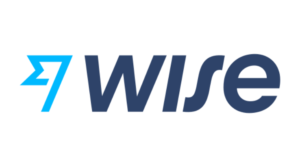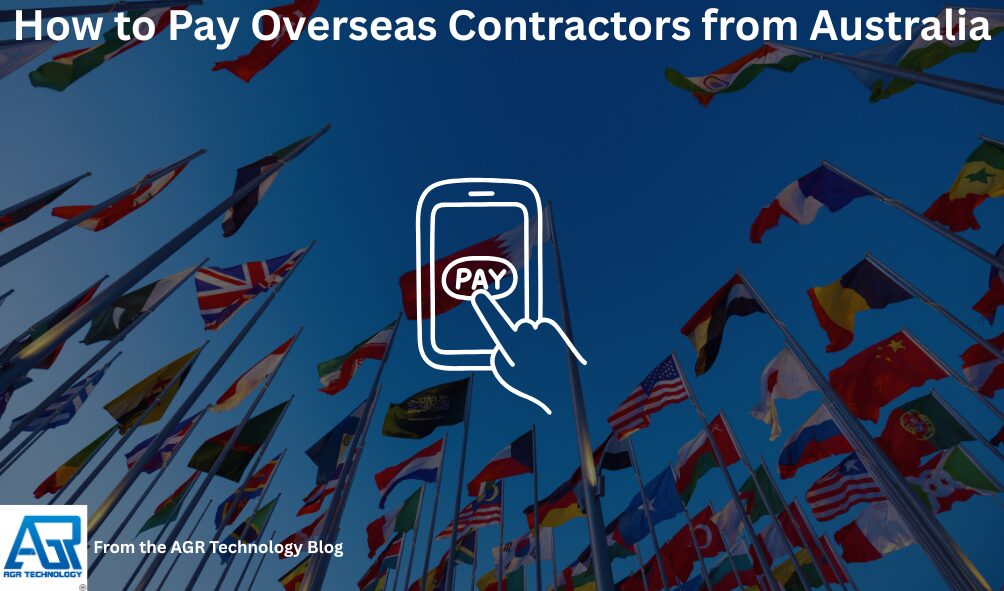Note: The following content is designed to be a general guide and not legal advice, be sure to seek legal advice if required. This content includes sponsored links whereby we may receive a commission on sales with no expense to you
As more Australian businesses tap into global talent, paying overseas contractors has become a common challenge. Navigating international payments isn’t just about sending money—it’s about understanding the best methods, managing costs, and staying compliant with local regulations. With options like bank transfers, online payment platforms, and multicurrency accounts, each choice comes with its own fees, exchange rates, and processing times.
Selecting the right payment method can save both time and money while ensuring contractors receive their payments promptly. It’s crucial to keep communication clear and gather all necessary banking details to avoid delays. As businesses expand internationally, getting the payment process right helps maintain strong working relationships and supports smooth global operations.
Top Platforms For Making Global Payments in December 2025
Wise

Wise is a fintech business that provides a global payment platform for international money transactions. Its primary value offering is to offer rapid, low-cost, and transparent cross-border payments utilising the genuine mid-market exchange rate and a modest upfront fee. The website also provides a multi-currency account, allowing users to store, send, receive, and spend money in more than 40 different currencies. This includes a debit card for foreign purchases. The company’s infrastructure is also accessible to other banks and businesses via its “Wise Platform” API, allowing them to provide comparable international payment capabilities to their own consumers.
Payoneer

Payoneer is a global payment platform that enables businesses and freelancers to be paid abroad. It facilitates cross-border payments by giving users with local receiving accounts in a variety of currencies, including USD, EUR, and GBP, allowing them to accept payments from customers and marketplaces as if they had a local bank account. This eliminates the need for sophisticated and expensive wire transfers. The platform is well-integrated with worldwide markets such as Amazon and Upwork, making it a popular way for professionals to get their revenue. Users can then withdraw funds to their local bank account, utilise a Payoneer debit card, or transfer funds to other Payoneer users. In essence, Payoneer serves as a bridge for international commerce, allowing firms and freelancers to operate abroad and is very popular in countries like Pakistan.
Understanding Overseas Contractors and Legal Considerations

Ensuring legal compliance and clarity when paying overseas contractors from Australia protects businesses from unexpected liabilities. Precise classification and adherence to tax and regulatory requirements help maintain operational continuity and reduce financial risk.
Defining Overseas Contractors and Worker Classification
Australian companies classify overseas contractors as individuals or entities providing services outside Australia without being direct employees. Most contractors manage their own tax, insurance, and superannuation unless exceptions apply.
Key differences between employees and contractors include contract ownership, payment frequency, and autonomy over work. For example, employees receive regular wages and follow set schedules, while contractors usually invoice for specific projects and control delivery timelines.
Misclassifying overseas workers increases exposure to penalties and noncompliance issues under Australian law.
Key Legal and Tax Obligations in Australia
Australian businesses working with overseas contractors comply with national regulations governing payments, reporting, and intellectual property.
Key obligations include:
- Payment Documentation: Businesses provide documentation such as the PAYG payment summary (NAT 73297) for foreign employment income, especially if tax is withheld or paid to a foreign government.
- Tax Withholding: Companies generally don’t withhold tax for contractors unless payments relate to interest, unfranked dividends, or royalties. Exceptions exist if services are performed in Australia or payments surpass significant thresholds—consulting a tax advisor addresses these complexities.
- Superannuation: Overseas contractors don’t typically trigger superannuation contributions unless the contractor physically performs services in Australia or other rules apply.
- Currency and Transfers: Payment agreements specify currency, timing, and transfer method—examples include bank wires, PayPal, or TransferWise—acknowledging risks from exchange rate fluctuations and transfer fees.
- Jurisdiction: Contracts should clearly state the governing law and dispute resolution process. For instance, agreements may stipulate resolution under Australian law to avoid legal disputes in foreign courts.
- Intellectual Property: Agreements confirm that all IP created during the contract belongs to the Australian business, protecting company assets.
Businesses referencing these obligations ensure payments to overseas contractors remain compliant, efficient, and secure.
Important Factors Before Making Payments
Assessing superannuation, tax, worker classification, and compliance is critical when paying overseas contractors from Australia. Proper planning reduces legal and financial risks.
Superannuation and Tax Implications
Determining superannuation and tax obligations depends on whether the worker is classified as an employee or a contractor. Employees generally trigger superannuation contributions under Australian law, but contractors usually handle their own tax—unless local regulations or specific scenarios require withholding or reporting by the payer. For example, a contractor performing services in Australia or involved in significant transactions may require review by a tax specialist to confirm any superannuation obligations. Some countries’ tax treaties with Australia may alter withholding requirements or define tax responsibilities differently, so businesses must stay updated on international tax agreements. PAYG payment summaries, such as the NAT 73297 for foreign employment, apply when payments include tax withheld. Clarifying responsibility—contractor’s or payer’s—for tax payments upfront prevents disputes later.
Risks of Misclassification and Compliance Issues
Misclassifying an overseas worker threatens compliance, employee entitlements, and reputation. Authorities focus on the true nature of the working relationship—level of independence, control over tasks, and contractual terms—rather than just job title. Misclassification can result in fines, audits, mandatory back payments, or demands for unpaid superannuation. Local labor laws sometimes differ across countries, so a contractor’s country may also investigate classification. Businesses must comply with international tax reporting and employment law, including any applicable withholding taxes. Clear agreements and supporting documentation help establish genuine independent contractor status and mitigate risk.
| Key Compliance Risk | Potential Consequence |
|---|---|
| Worker Misclassification | Fines, legal disputes, back payments |
| Incomplete Documentation | Audits, delayed payments, penalties |
| Noncompliance w/ Tax Law | Withholding violations, sanctions |
Verifying contractor status, confirming document accuracy, and understanding local and foreign law connections are essential for compliance when paying overseas contractors from Australia.
Payment Methods for Overseas Contractors
Paying overseas contractors from Australia presents a range of reliable payment solutions tailored for different business sizes, budgets, and contractor locations. Each method affects transaction speed, cost, and convenience.
Bank Transfers and International Wire Options
Bank transfers and international wires connect Australian businesses directly with contractors’ foreign bank accounts.
- Traditional banks rely on SWIFT for most international payments, processing transfers to over 80 countries but often charging fees between AUD 10–30 per transaction (based on typical Australian bank pricing structures).
- Exchange rates used by banks commonly include markup, increasing the effective cost of the transfer.
- Processing times for bank wires typically range from two to five business days, depending on banks and recipient countries.
- Businesses must collect full banking details from contractors—account numbers, SWIFT/BIC codes, and address—which can slow onboarding.
These options are best suited for high-value or one-off payments where transparency and recipient familiarity with bank transfers are prioritized.
Digital Payment Platforms
Digital payment platforms simplify payouts for overseas contractors using secure online systems.
- Providers like PayPal, Payoneer, Wise, and Revolut support fast, global transactions and batch payments, with Wise covering 80+ countries and Payoneer supporting direct deposits in over 190 countries.
- Fees vary: PayPal averages 2–3% per transaction plus currency conversion markup, Wise offers mid-market rates with no hidden markups, and Payoneer provides batch payment discounts for bulk transfers.
- Contractors often receive funds within hours to a few days, with no need for local bank accounts or lengthy paperwork.
- Some platforms require both payer and payee to have accounts; others like Payoneer and Wise enable direct transfers to contractor bank accounts.
Digital platforms suit businesses seeking lower fees, faster settlements, and simplified mass payments when managing multiple international contractors.
Multi-Currency Accounts
Multi-currency accounts give businesses flexible access to dozens of currencies in one platform.
- Australian businesses can use accounts from digital providers to receive and hold payments in up to 10–40 currencies, reducing the need to convert funds immediately.
- Companies choose when to exchange funds, using market rates to optimize costs and manage currency exposure.
- Multi-currency accounts allow easy payments to overseas contractors, especially when working with teams in several countries, by avoiding regular bank conversion fees.
- Some providers integrate with business accounting systems, streamlining financial processes for payroll and compliance.
This method is most effective for organizations making frequent, multi-country payments or holding funds to hedge against currency fluctuations.
Choosing the Best Payment Solution
Finding the ideal payment solution for overseas contractors requires comparing costs, speed, reliability, and handling exchange rates. Businesses using bank transfers, digital wallets, or contractor platforms face variations in fees and timelines that directly affect contractor relationships and operational efficiency.
Comparing Costs, Speed, and Reliability
Evaluating payment methods by cost and reliability streamlines international payroll management.
- Bank Transfers (Wire Transfers):
Banks process cross-border payments through the SWIFT network, typically charging AUD 10–30 per transfer. Bank wires to most overseas destinations, such as the USA or UK, take 2–5 business days. Hidden costs often include third-party fees and currency exchange markups of up to 3%.
- Digital Wallets and Online Payment Platforms:
Platforms like PayPal, Wise, and Payoneer enable businesses to send payments in under 48 hours, sometimes instantly. Typical fees are within the 0.5%–3% range; Payoneer charges a $1.50 domestic transfer fee plus 2% for currency conversion (source: company fee schedules, 2024). Digital wallets bypass bank intermediaries, reducing delays and simplifying contractor recordkeeping.
- Contractor Management Platforms/EOR Services:
Services such as Justworks or RemoFirst combine payroll, compliance, and invoicing—suited for ongoing contractor relationships. Charges include a recurring service fee and currency exchange spread but centralize global contractor administration.
- International Money Orders:
Money orders remain a niche choice for one-off or high-security payments. They reach recipients in 7–10 days and carry higher costs per transfer. Most Australian businesses avoid this method for routine payments due to slow delivery and manual processing.
| Payment Method | Average Fee | Speed | Typical Use Case |
|---|---|---|---|
| Bank Transfers (SWIFT) | AUD 10–30 + markup | 2–5 business days | Large value, direct payments |
| Digital Wallets/Platforms | 0.5–3% | Same day–2 days | Frequent, smaller transfers |
| Contractor Mgmt Platforms | Service + FX fees | 2–3 days | Ongoing, multi-country teams |
| Int’l Money Orders | AUD 10+ | 7–10 days | Rare, high-security transactions |
Transparent communication about payment schedules, deductions, and conversion timelines maintains contractor trust and sets clear expectations.
Managing Currency Exchange and Fees
Proactively handling currency conversion and fees reduces costs for both businesses and contractors.
- Digital payment platforms display real-time exchange rates, allowing for optimized transfer timing.
- Comparing provider fee schedules cuts hidden costs. Fee structures vary significantly; some banks and processors mark up exchange rates by over 2%, while digital providers may offer mid-market rates.
- Multi-currency business accounts streamline transactions for businesses regularly paying in multiple currencies by reducing repeated conversion costs.
Key best practices include specifying payment currency with contractors and clarifying which party covers all fee types—transfer, conversion, and intermediary charges. For example, Australian businesses negotiating payments to US-based contractors often agree to pay in USD, absorbing digital wallet fees, but require transparent billing for any additional banking costs.
Selecting the best payment solution for overseas contractors involves balancing upfront fees, speed, regulatory compliance, and minimizing foreign exchange loss. Consistent processes and clear communication mitigate disputes and support ongoing contractor partnerships.
Recordkeeping and Reporting Requirements
Maintaining accurate records and meeting reporting obligations streamlines compliance when paying overseas contractors from Australia. Proper documentation supports audits, tax requirements, and legal protection for both businesses and contractors.
Benefits and Challenges of Hiring Overseas Contractors
Key Benefits of Hiring Overseas Contractors
- Broader Talent Pools
Hiring overseas contractors gives businesses access to diverse skill sets and specialized expertise unavailable locally. Global platforms enable companies to source web developers from Eastern Europe, graphic designers from Southeast Asia, or customer support agents from South America.
- Cost Savings
Paying overseas contractors often reduces labor expenses compared to hiring locally. According to industry analyses, businesses can save 30–60% on contractor costs, depending on country of origin and labor market differences.
- Business Flexibility and Agility
Engaging overseas contractors allows companies to scale teams up or down based on project needs. For example, seasonal retailers commonly hire offshore marketing teams during high-demand periods while keeping their core workforce lean in off seasons.
- Access to 24/7 Operations
Working with contractors in different time zones enables continuous workflow. Software development teams, for instance, use this model to cover urgent bug fixes overnight, improving project turnaround time.
Main Challenges of Hiring Overseas Contractors
- Compliance with Legal and Tax Regulations
Hiring overseas contractors introduces complex cross-border compliance risks. Misclassifying employees as contractors can lead to fines and legal action, as Australian businesses must accurately follow ATO worker classification rules and tax treaties for each jurisdiction.
- Intellectual Property Protection
Outsourcing increases the need for robust contracts to secure IP rights. If businesses don’t implement clear agreements and jurisdiction clauses, there’s higher risk of unauthorized use or disputes regarding proprietary information.
- Payment Delays and Fees
International payments often incur transaction and currency conversion fees, eroding initial cost savings. Digital wallets typically charge 0.5%–3% per transaction, while bank wires may add AUD 10–30 per transfer, with payments taking up to five business days to clear.
- Currency Fluctuations
Exchange rates fluctuate daily, affecting the final payment contractors receive. Businesses making frequent payments in foreign currencies face budgeting challenges unless they use multi-currency accounts or proactive currency management strategies.
- Communication Barriers
Remote teams face challenges from language differences or lack of shared cultural context. Misunderstandings about deadlines, quality expectations, or deliverables are common if communication isn’t clear and regular.
Overseas Contractor Hiring: Benefits and Challenges Table
| Benefit/Challenge | Description | Example/Impact |
|---|---|---|
| Broader Talent Pools | Access to specialized global expertise | Hiring UI designers from Asia |
| Cost Savings | Labor costs reduced by 30–60% depending on location | Tech support in Eastern Europe |
| Flexibility & Agility | Quickly scale teams for projects or seasonal surges | Seasonal e-commerce marketing |
| 24/7 Operations | Time zone differences enable round-the-clock work | Overnight software support |
| Legal & Tax Compliance Challenges | Complex multi-jurisdiction rules and ATO regulations | Fines for misclassification |
| IP Protection Risks | Need for watertight contracts and jurisdiction clauses | Proprietary code disputes |
| Payment Delays & Fees | International transaction and currency conversion fees, 2–5 days processing | PayPal, Payoneer, bank wire |
| Currency Fluctuations | Daily rate changes impact payment accuracy | Unplanned increases in contractor costs |
| Communication Barriers | Language or cultural gaps hinder project clarity | Missed deadlines due to differing expectations |
Engaging overseas contractors brings opportunities for growth, cost reduction, and operational efficiency when businesses proactively address these legal, financial, and logistical risks.
Key Takeaways
- Paying overseas contractors from Australia requires choosing the right payment method—bank transfers, digital platforms, or multi-currency accounts—to balance cost, speed, and convenience.
- Legal compliance is crucial: Proper worker classification, adherence to tax and superannuation obligations, and clear contract terms protect businesses from fines and disputes.
- Maintaining accurate records and thorough documentation supports compliance with ATO regulations and prepares businesses for potential audits or legal checks.
- Frequent challenges include complex legal requirements, IP risks, payment delays, and currency fluctuations, but solutions such as clear contracts and proactive fee management help mitigate these issues.
- Leveraging overseas contractors offers access to a broader talent pool, cost savings, operational flexibility, and 24/7 productivity when managed with effective compliance and communication practices.
Conclusion
Paying overseas contractors from Australia requires careful planning and a strong understanding of both legal and financial requirements. When businesses take the time to choose the right payment methods and ensure compliance with regulations they set themselves up for smooth international operations.
By staying organized and prioritizing clear agreements with contractors Australian businesses can confidently expand their global reach while minimizing risks and maintaining strong professional relationships.
Related content:
Top SMB Loan Brokers in Australia
Leading Australian Cryptocurrency Exchange Platforms
How To Buy Crypto in Australia
Frequently Asked Questions
What are the most common methods for paying overseas contractors from Australia?
Australian businesses typically pay overseas contractors using bank transfers, digital payment platforms (such as PayPal, Payoneer, or Wise), and multi-currency accounts. Each method varies in terms of fees, processing times, and convenience.
How can Australian businesses minimize costs when paying overseas contractors?
To optimize costs, businesses should compare the fees and exchange rates of different payment methods, clarify who is responsible for payment charges, and use multi-currency accounts to manage frequent payments in various currencies.
Are there legal or tax obligations when paying overseas contractors?
Yes. Australian businesses must ensure proper contractor classification, provide appropriate documentation, understand tax withholding rules, and comply with superannuation requirements, if applicable, to avoid penalties.
Do Australian businesses need to keep records of payments to overseas contractors?
Yes. Accurate records, including contracts, invoices, and payment confirmations, must be kept for at least five years to meet Australian Taxation Office (ATO) requirements and to ensure compliance during audits.
What risks do businesses face if they misclassify an overseas worker?
Misclassifying workers can lead to fines, legal disputes, and issues with superannuation and tax compliance. It’s crucial to properly determine if a worker is an employee or contractor.
How fast are international payments processed to overseas contractors?
Bank transfers typically take 2–5 business days. Digital payment platforms can complete transactions within the same day to two days, depending on the service and destination country.
Who pays the fees for international contractor payments—the business or the contractor?
This depends on the contract agreement. Businesses should clarify payment terms in advance, specifying who is responsible for covering transaction and currency exchange fees.
What information is needed to pay an overseas contractor?
You’ll need the contractor’s bank details, such as account number, SWIFT/BIC code, and banking address. For online platforms, ensure you have the correct email or account information.
Do Australian businesses have to pay superannuation to overseas contractors?
Generally, superannuation is not required for independent contractors outside Australia. However, if the worker is classified as an employee or certain conditions apply, superannuation commitments may arise.
Why is it important to have clear contracts with overseas contractors?
Clear contracts help define payment terms, intellectual property rights, jurisdiction, and deliverables, reducing risks of disputes and ensuring legal and operational compliance.

Alessio Rigoli is the founder of AGR Technology and got his start working in the IT space originally in Education and then in the private sector helping businesses in various industries. Alessio maintains the blog and is interested in a number of different topics emerging and current such as Digital marketing, Software development, Cryptocurrency/Blockchain, Cyber security, Linux and more.
Alessio Rigoli, AGR Technology
![logo-new-23[1] logo-new-23[1]](https://agrtech.com.au/wp-content/uploads/elementor/thumbs/logo-new-231-qad2sqbr9f0wlvza81xod18hkirbk9apc0elfhpco4.png)

